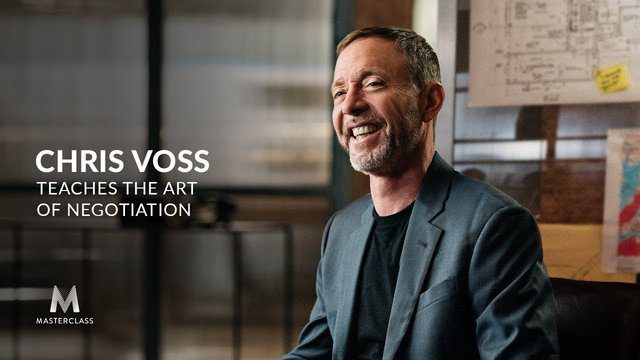The adversary is not the person across the table; the adversary is the situation.
While many believe that negotiation is a battle, Chris sees successful negotiation as a collaboration rooted in empathy. Chris is the CEO & Founder of the Black Swan Group, he is the author of Never Split The Difference: Negotiating As If Your Life Depended On It. He is a former FBI lead international kidnapping negotiator.
Here are my favourite takeaways from viewing the
Negotiation is not a zero-sum game: The situation is the adversary, and the person across the table is actually your negotiating partner—a partner who is to be worked with, not against, in pursuit of a mutually beneficial outcome. In short, effective negotiation is collaborative. In the spirit of collaboration, Chris says your over-arching goals in a negotiation should include: Understanding Emotions Needed Skill Sets In the negotiating room, there are three main tones of voice: Mirroring Mirroring can also be used to gather intel. Using it with the inquisitive inflection will lead your counterpart to not only repeat themselves but to elaborate and offer additional details. This expands what you know about them and their position. Labeling Labeling is used to give voice to the other side’s feelings. Good labels take the form of: To label effectively, you must avoid all use of the first-person pronoun, as in, “What I’m hearing…” or “I think…” First-person phrases signal that you are your number one priority and everyone else in the room is an afterthought. At its core, labeling is designed to let the other side know that you understand their feelings, to help build relationships, and to gather information. Calibrated Questions Calibrated questions are how and what questions structured for maximum effect. They are designed to change the power dynamic of the negotiation and force consideration of your position into the equation. In other words, they allow the other side to see things from your side of the table and allow everyone to keep their sense of autonomy in tact. Calibrated questions often sound like this: Yes and No Question: When it comes to a line of questioning, there are three types of yes answers : Bargaining When negotiating, it’s always best to steer clear of a bargaining situation. But sometimes it’s unavoidable. Below are the stages of the Ackerman system. It’s paramount to employ tactical empathy between each round: MasterClass is a streaming platform that makes it possible for anyone to learn from the very best. MasterClass is an online membership – accessible on your phone, web, Apple TV, Roku devices, and Amazon Fire TV – that offers classes on a wide variety of topics taught by 85+ world-class masters at the top of their fields. Their immersive learning experiences combine incredible video content, downloadable materials, and social interaction with the MasterClass community, all of which users can explore at their own pace. The annual membership is available for $180 USD, which allows unlimited access to ALL on demand MasterClass content for the year Chris Voss Teaches the Art of Negotiation Give One Annual Membership. Get One Free. All the best in your quest to get better. Don’t Settle: Live with Passion. For More Information: MasterClass Home Page
This voice is declarative, straight up, and delivered like a punch in the nose. (Always counterproductive.)
This voice is a bearer of truths delivered gently. It promotes collaboration. This should be your go-to voice in negotiations. (Use it approximately 80 percent of the time.)
This voice is straightforward with a soothing, downward lilt. It’s best employed when establishing points of negotiation that are immovable. (Use it approximately 10 to 20 percent of the time.)

Comments are closed.